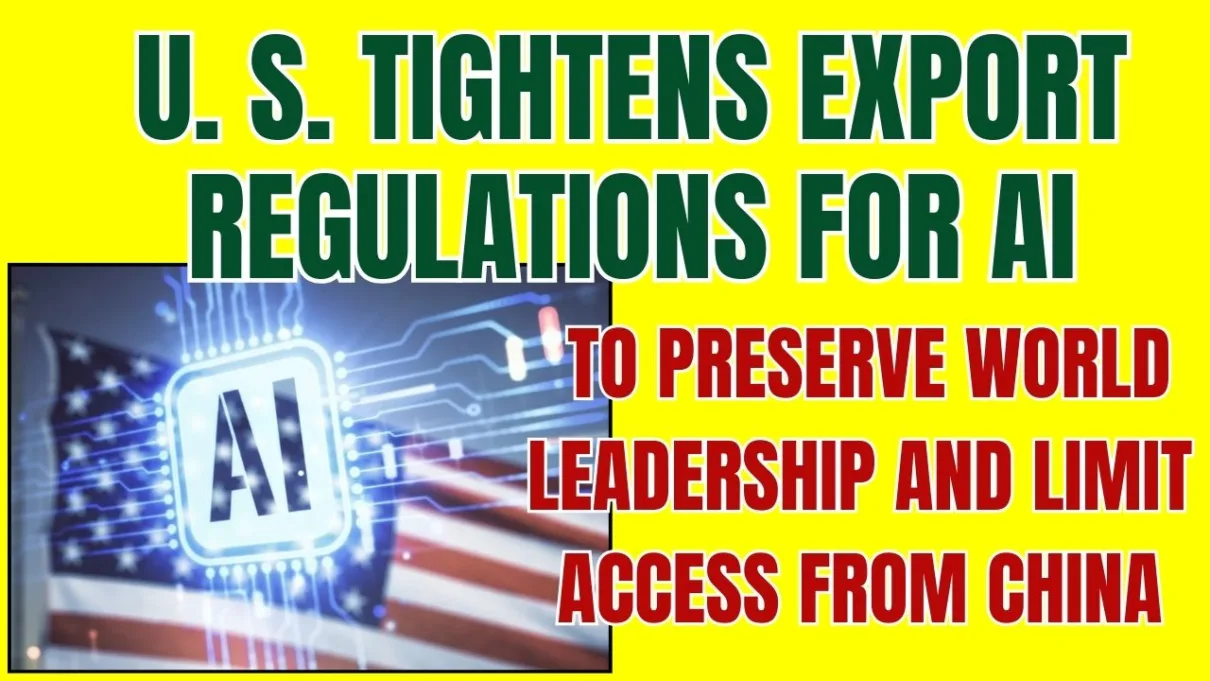The United States has implemented new AI export rules on Monday. These rules control the export of artificial intelligence (AI) technology. The aim is to safeguard national security. This also seeks to maintain a competitive edge. These regulations impact various sectors. They affect tech companies and research institutions alike. The changes are significant.
Key Aspects of the Regulations
The rules create three tiers of countries for exports of advanced AI chips and technology. Tier 1 includes close allies and partners such as Australia, Japan, South Korea, and Taiwan, who will face no restrictions. Tier 2 countries will face caps on the number of AI chips they can import, while Tier 3 countries will require a license for any exports. China, Russia etc are in tier 3 countries.

The rules affect the export of AI software. They also target hardware. Certain types of chips are included. High-performance computing resources are also impacted. The regulations require licenses for exports. These are needed to certain countries. This process can be complex. Companies must prove their exports are not a risk. They must demonstrate responsible use.
Which Countries Are Affected
However the government has not openly told the public about limitations for a particular country, but surely targets certain nations. China is a major focus. Russia is also under scrutiny. Other countries with security concerns are also listed. The regulations are not uniform.
They vary based on the destination country. Some nations face strict restrictions. Others may have less stringent requirements. The US is adapting these rules constantly. This is due to the rapid evolution of AI. 20 countries are listed in tier 1 where the government will not ask any license and further documentation.
The second priority will be given to USA supported countries including Saudi Arabia, Israel and other 120 countries. The most restrictions will be faced by China and Russia where they need to complete proper documentation and licenses to export or import AI chips from USA.
Over 50 lakh Indians currently have US visas: US Ambassador Garcetti
The H-1B visa lottery is shutting out top talent! Change it..
Impact on Businesses
These export rules create new challenges for companies. Tech firms must now navigate complex regulations. They have to obtain export licenses. Compliance can be expensive. It can also be time-consuming. There might be delays in shipments. This can disrupt supply chains.
It can also affect partnerships. Businesses might need to re-evaluate their global strategies. They may need to consider alternative markets. The rules also affect research institutions. Collaborations with international partners require careful review.
Impact on Research and Development
These rules can slow down AI research. International collaboration is crucial for AI advancement. These collaborations are facing new hurdles. Researchers need to comply with export regulations.
This can limit the exchange of information. It can hinder the sharing of cutting-edge research. Some worry this could stall global AI progress. The US government says safeguards are necessary. They aim to balance innovation with national security.
Debate and Criticisms
These new rules have sparked debate. Some argue they are necessary for national security. They feel the risk of misuse is real. Others express concern over limitations. They worry that regulations could stifle innovation. They also worry about economic competitiveness.
There is also worry over unintended consequences. The regulations could create barriers for legitimate businesses. Some are concerned about the scope of the restrictions. The line between national security concerns and trade protectionism is debated.
2025 SSI Payment Schedule Announced: Are You Getting Paid More This Year?
If You Have a Pre-1997 Check, Get $5000 Within Hours – Know How?
Why the New Rules
Several factors triggered these rules. Rapid AI advancements are one reason. AI has become very powerful. It has applications in many fields. Some applications are military in nature. The US wants to control the technology. It seeks to prevent misuse. There are concerns about adversaries. These concerns relate to potential threats. The US also wants to protect its innovation. It aims to avoid technology transfers that could weaken its position.
Future Outlook
The AI export rules are expected to evolve. The US government will continue to adjust. These changes will happen based on tech developments. They will also react to global changes. Ongoing dialogue is needed. It must involve stakeholders in the industry.
This will help navigate the new landscape. There needs to be balance. It must be between security and innovation. The aim is to ensure responsible AI development and deployment. The future of AI exports remains uncertain. It will depend on further changes in the tech field.
